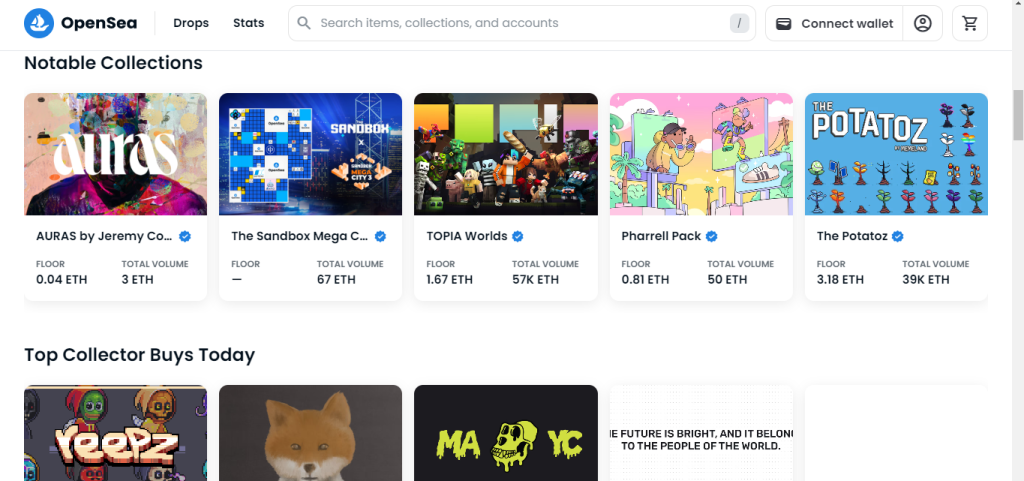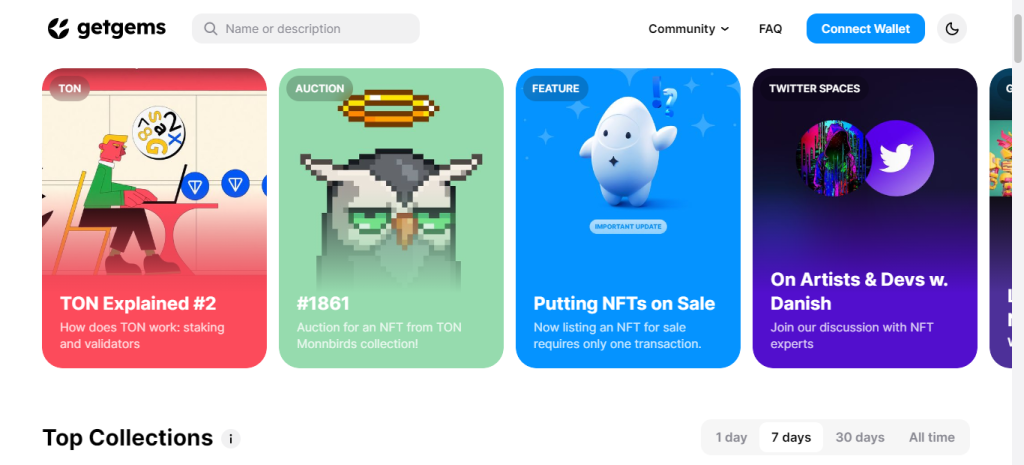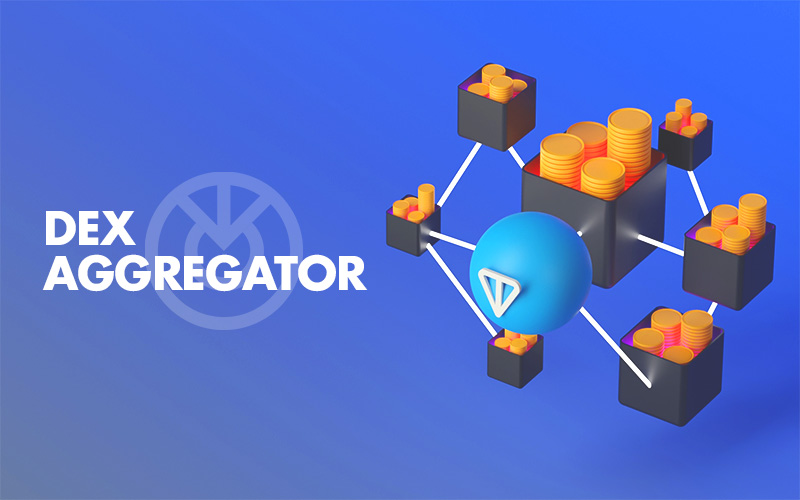It’s always a surprise that a single digital artwork was sold for millions of dollars as a non-fungible token (NFT). It’s just one magnificent example of the groundbreaking world of NFT marketplaces, where digital assets are transforming the way we view and trade value. Imagine owning a piece of digital history, a unique collectible, or even virtual lands—all securely stored and verified on a blockchain. NFT marketplaces have emerged as the go-to destinations for artists, creators, and collectors to showcase, buy, and sell these one-of-a-kind assets.
From Art to Virtual Realms…
What is NFT Marketplace?
A marketplace for blockchain refers to an online platform or ecosystem where participants can buy, sell, trade, or exchange various blockchain-based assets, such as cryptocurrencies, non-fungible tokens (NFTs), digital collectibles, or decentralized finance (DeFi) tokens. These marketplaces leverage blockchain technology to facilitate secure, transparent, and peer-to-peer transactions without the need for intermediaries. They provide a trusted environment for users to engage in buying and selling activities, explore new opportunities, and interact with a wide range of digital assets within the blockchain ecosystem. NFT marketplaces serve as platforms for selling your NFTs, similar to auction houses. They provide a venue where you can list and showcase your digital assets for potential buyers to discover and purchase.
(For more info about NFTs check this article.)
Marketplace Evaluation
To have an overview we have to ask our self that what evaluates a marketplace?
As always in crypto and the world of digits, here are several factors that contribute to their effectiveness and success when evaluating marketplace platforms through the blockchain space. Here are some key factors to consider:
- Security and Transparency: Strong security keeps user information and transactions safe, while being open and clear builds trust by keeping reliable records.
- Scalability: The ability to handle increased transaction volumes and accommodate a growing user base seamlessly for a smooth user experience.
- User Experience: Intuitive interfaces, simplified processes, and comprehensive search capabilities enhance user satisfaction and engagement.
- Variety of Assets: Supporting diverse digital assets expands opportunities for participants, providing more options and liquidity.
- Liquidity: Active buyers and sellers in a liquid marketplace enable efficient trading and competitive pricing.
- Community and Support: A thriving community fosters growth, and accessible support encourages engagement and collaboration.
- Interoperability: The ability to integrate with other blockchain networks expands the marketplace’s utility and reach.
- Smart Contract Functionality: Automated and reliable transactions through smart contracts enhance efficiency and trust.
- Reputation System: User feedback and ratings build trust, encourage honesty, and help users make informed decisions.
- Governance Mechanism: Community involvement in decision-making fosters ownership and a decentralized ecosystem.
- Compliance and Regulation: Adhering to legal requirements builds trust and attracts institutional investors and users.
- Market Analysis and Insights: Providing comprehensive market analysis and data empowers informed decision-making.
- Innovation and Adaptability: Embracing technological advancements and evolving to meet user needs ensures competitiveness.
- Developer-Friendly Environment: Supporting developers with tools and incentives drives innovation and enhances the marketplace’s ecosystem.
- Accessibility and Global Reach: Worldwide accessibility, multilingual support, and localized customer service expand the user base and international adoption.
After conducting a thorough evaluation of different metrics, it becomes evident that valid NFT marketplaces offer a range of essential features and considerations. let’s discuss them and have a look at the table below.
NFT Marketplace
| Aspect | Valid NFT Marketplace | IN-Valid NFT Marketplace |
| Asset Quality | Curates high-quality and valuable NFTs | Contains low-quality or irrelevant NFTs |
| Intellectual Property Rights | Respects and protects creators’ IP rights | May infringe upon intellectual property rights |
| Secondary Market | Facilitates secure and regulated secondary trading | May lack proper mechanisms for secondary market transactions |
| Gas Fees | Offers reasonable and transparent gas fee structure | May have exorbitant or hidden gas fees |
| User Feedback | Incorporates user feedback and suggestions | Disregards user feedback or lacks improvement |
| Environmental Impact | Considers the environmental impact of NFTs | May contribute to excessive energy consumption |
| Scalability | Scales effectively to handle increased demand | May experience performance issues or bottlenecks |
| Interoperability | Supports interoperability with other blockchain platforms | May be limited to a specific blockchain ecosystem |
| Community Governance | Allows community involvement in decision-making | Lacks community governance mechanisms |
| NFT Standards | Supports industry-standard NFT formats and standards | May have proprietary or incompatible formats |
General Or Niche
That is the question!
After checking above factors related to valid NFT marketplaces, now lets get familiar with 2 types of NFT marketplaces. Between the boundaries of valid NFT marketplaces and the choices of niche or random ones, users are presented with distinct avenues for exploring and engaging with digital assets.
Lets dive deep into the details!
| Aspect | Niche NFT Marketplaces | Genaral NFT Marketplaces |
| Focus | Cater to specific industries, themes, or communities | Offer a wide range of digital assets from various sectors |
| Target Audience | Specific niche audience | Diverse audience from different backgrounds |
| Quality and Curation | Rigorous curation process | Open listing policy with minimal curation |
| Community Engagement | Strong sense of community | Opportunity for broader connections and interactions |
| Diversity of Digital Assets | Specialize in a particular type of asset | Wide variety of assets from different categories |
| Discoverability | Narrower selection, focused browsing experience | Extensive search and filtering options for exploration |
| Rarity and Exclusivity | Emphasize limited edition or rare assets | Availability of both rare and common digital assets |
| NFT Standards | Adhere to specific industry standards or protocols | May support a broader range of NFT standards |
Top NFT marketplaces provide platforms for users to buy, sell, and discover a wide range of digital assets, including artwork, collectibles and etc. They offer decentralized or centralized platforms, emphasizing features like community governance, control over intellectual property, and curation of high-quality and rare pieces. These marketplaces cater to different interests and preferences within the NFT ecosystem.
Let’s get to know the top ones:

- OpenSea
- Getgems
- Superrare
- Rarible and etc.
As an example, Opensea in a random and valid marketplace! in contrast Getgems is a niche type. since it is dedicated to TON blockchain and network.

Surfing through marketplaces actually is a really fun thing to do! In these websites you can obtain a lot of details and explanations. For instance:
- Different categories: NFT, Gaming etc
- Floor price
- auction
- Total Items of a collection
- Newest/Top collections
- Volume
- Trendings
- Their chain
- Time frame etc.
The world of NFT marketplaces has revolutionized how we perceive and trade digital assets. From million-dollar artwork sales to unique collectibles and virtual lands, these marketplaces have created new opportunities for artists, creators, and collectors to showcase, buy, and sell one-of-a-kind assets securely stored and verified on the blockchain.




